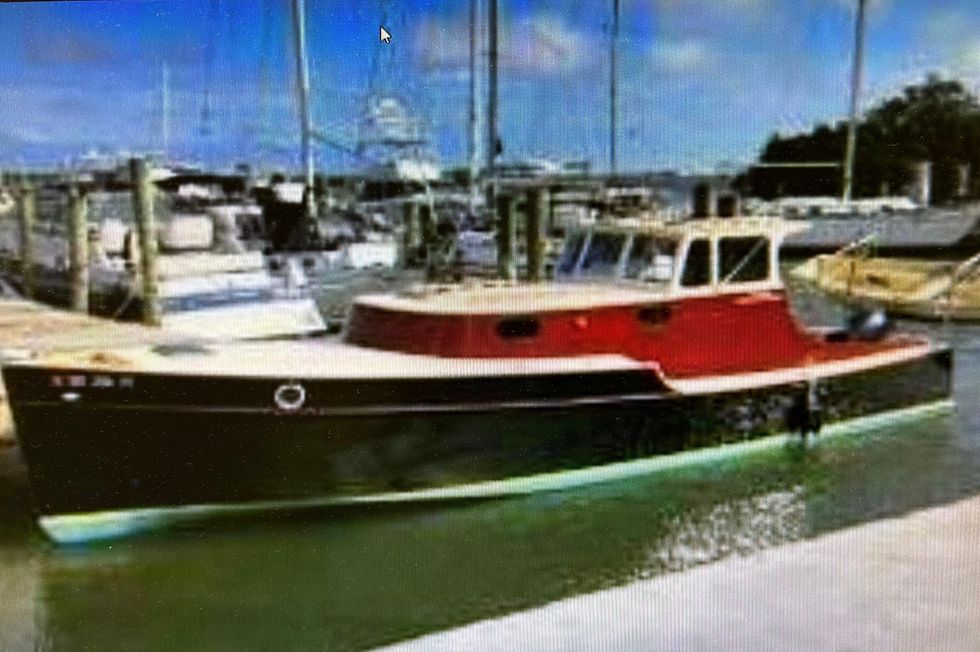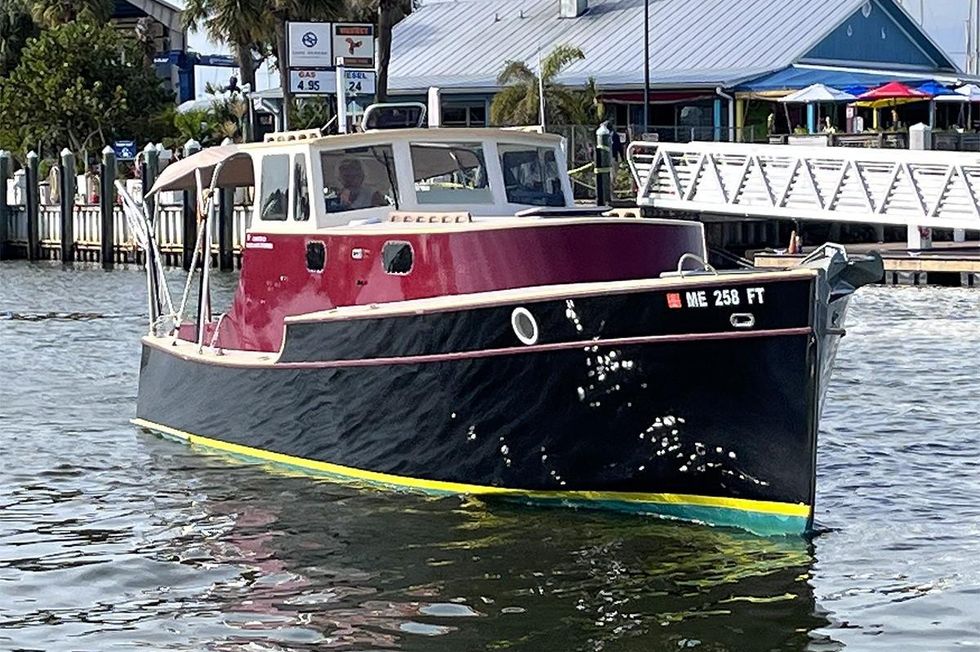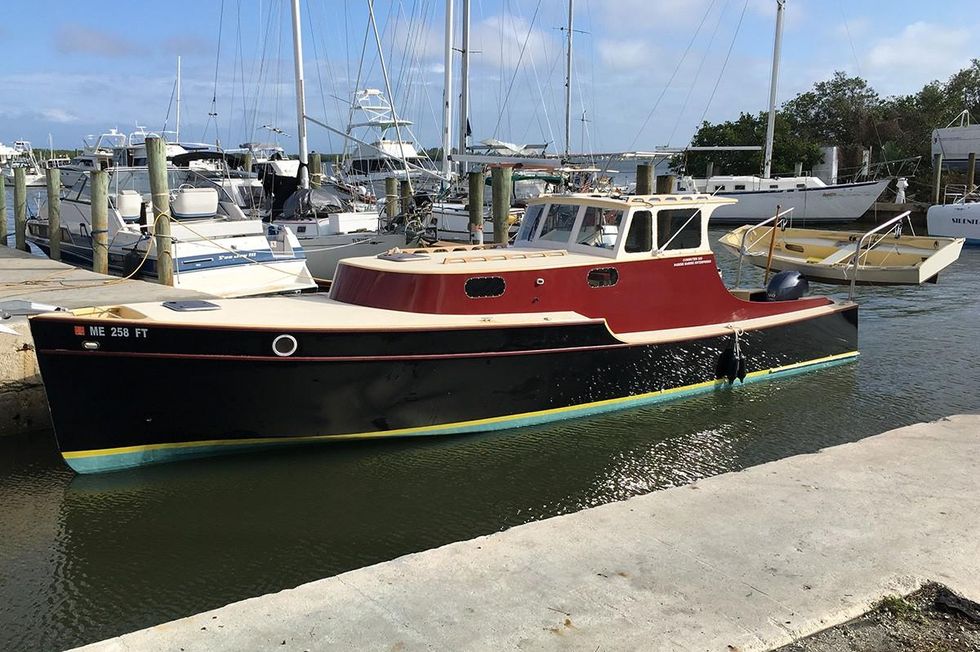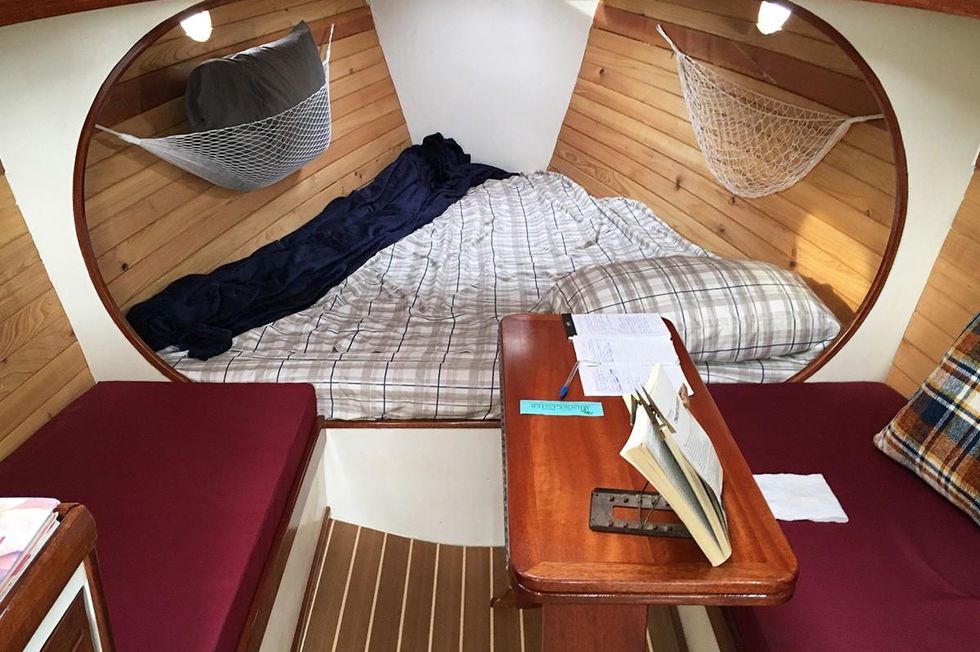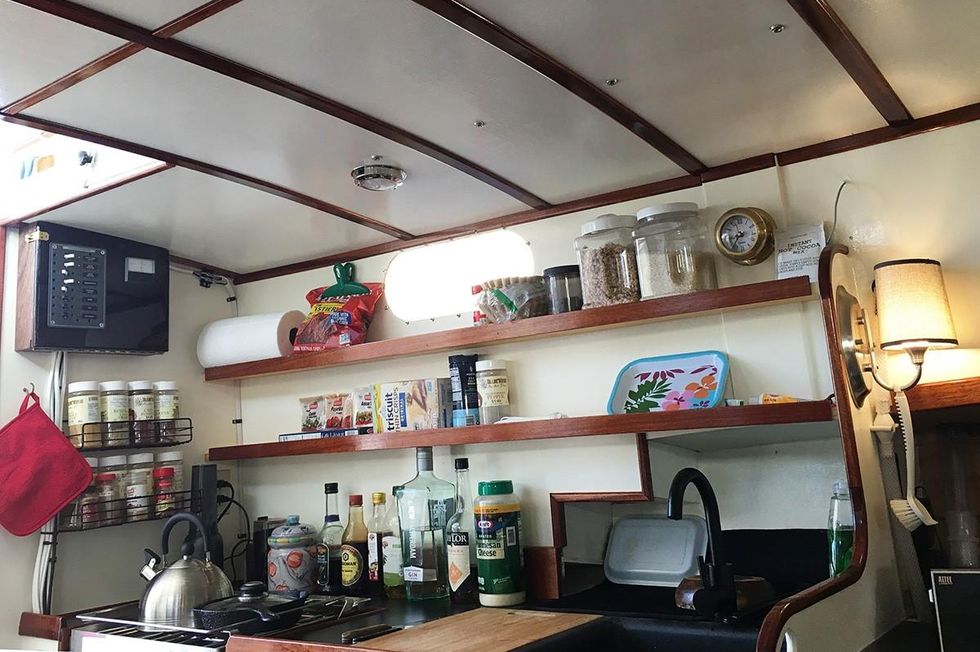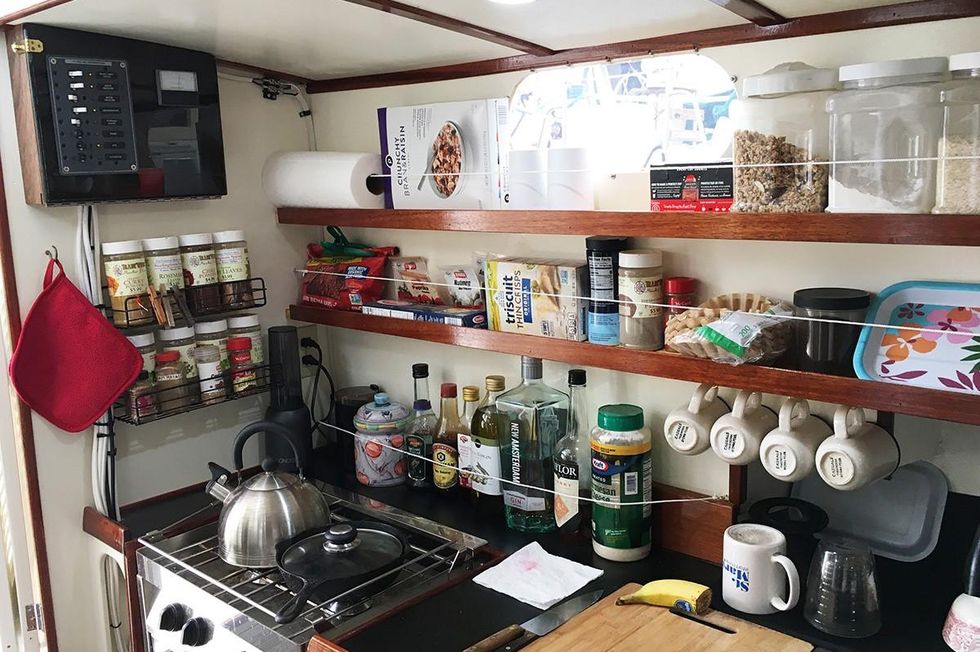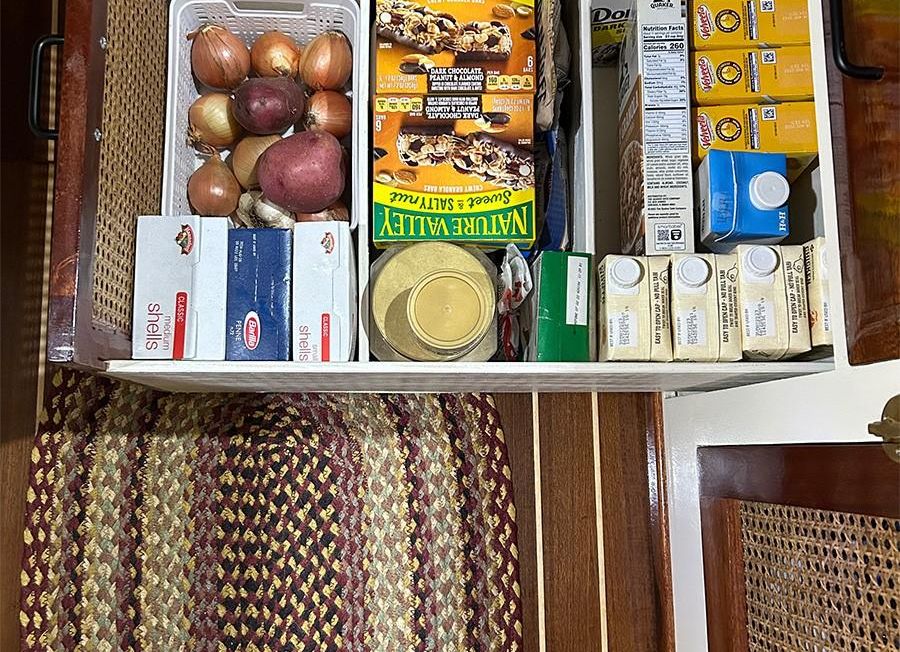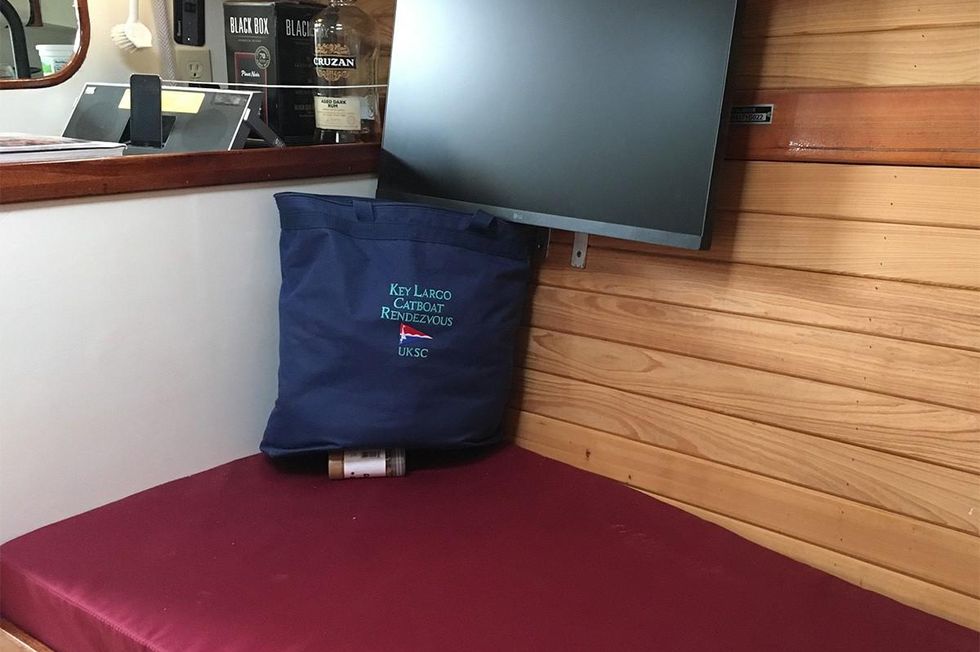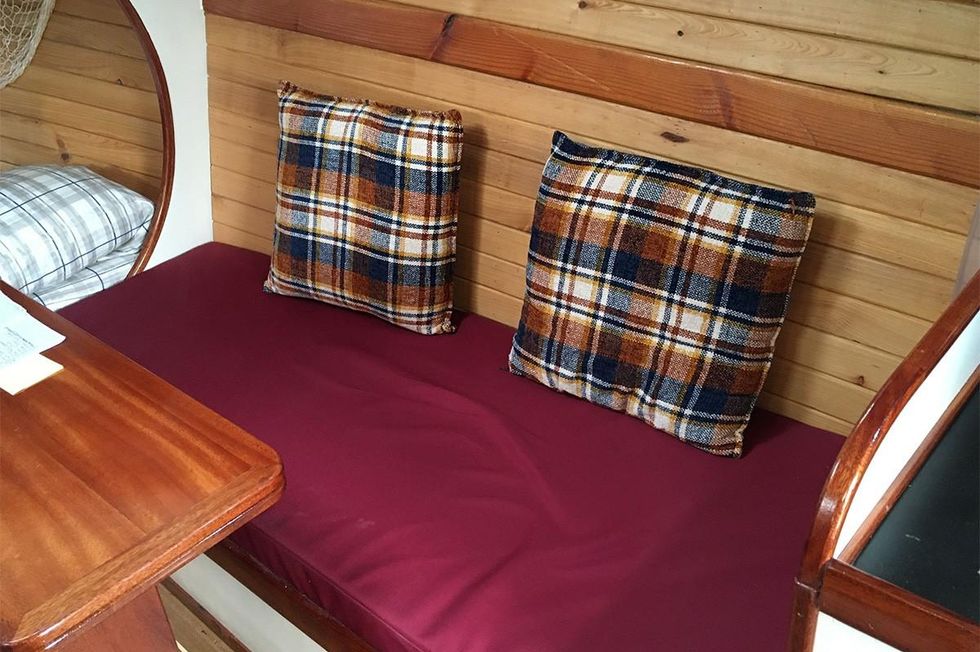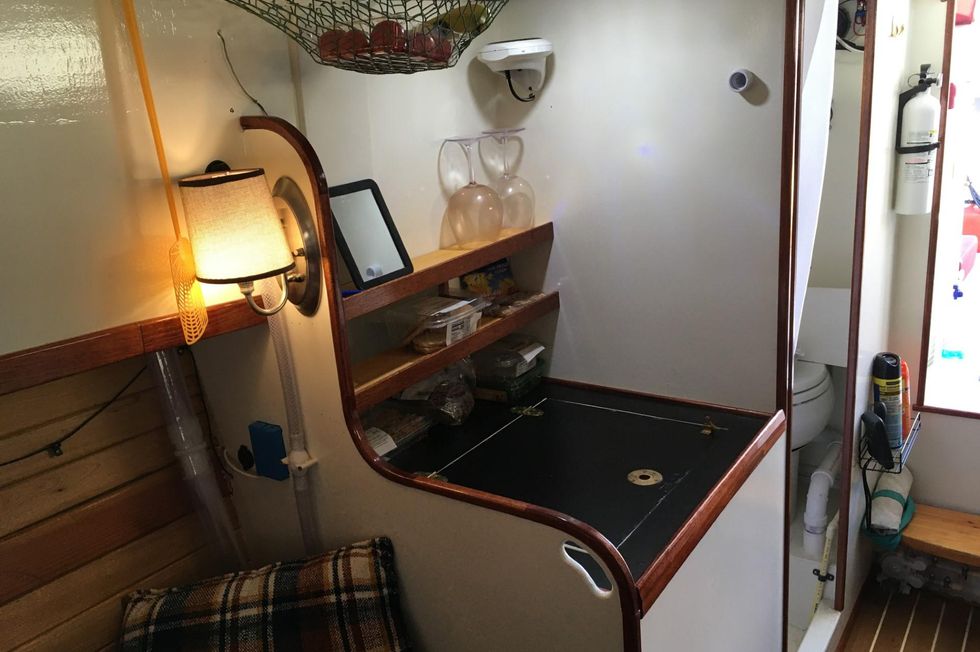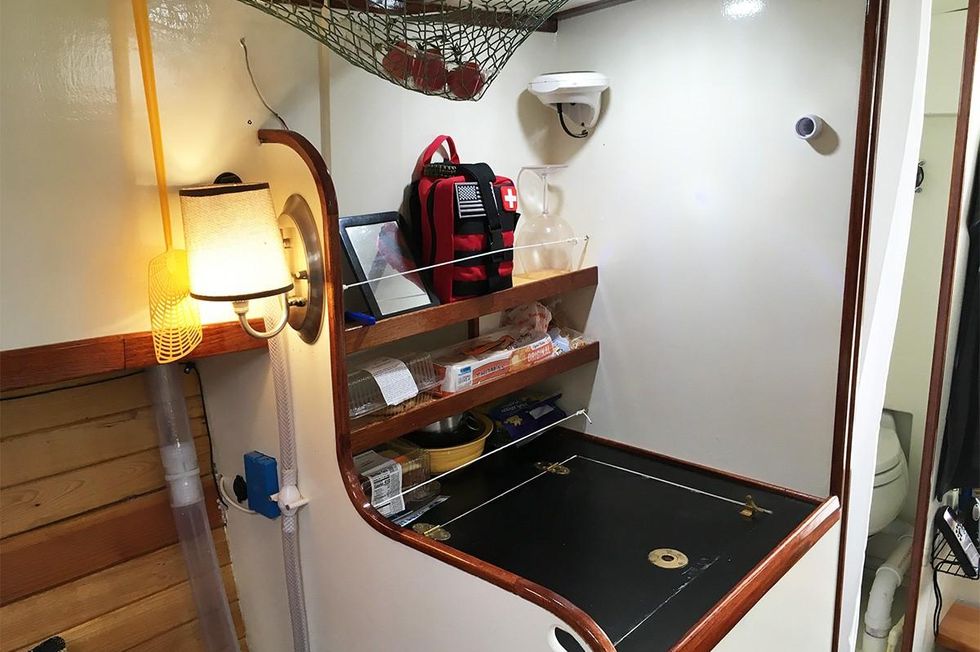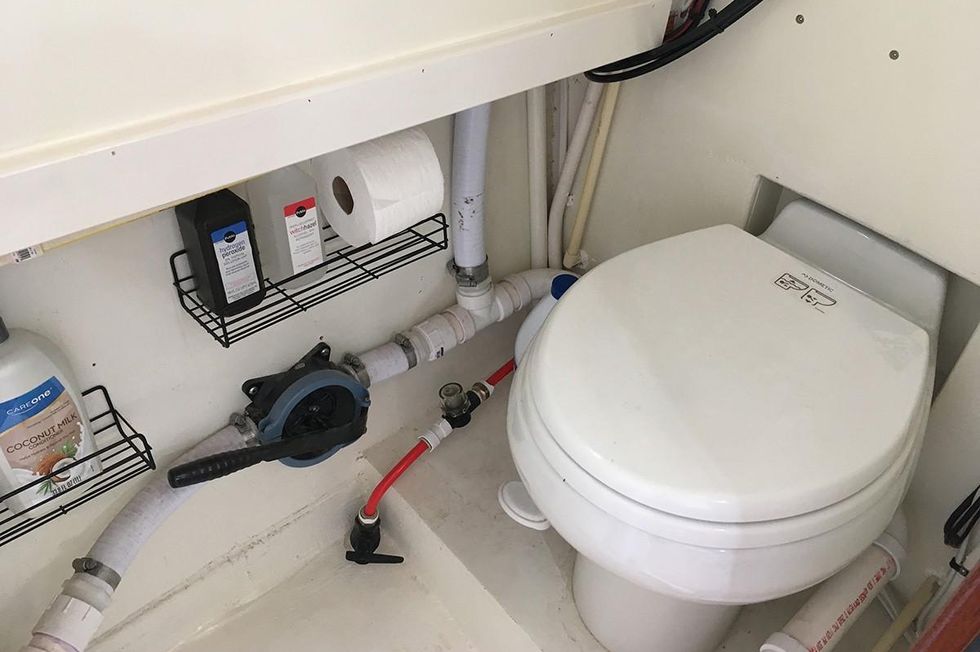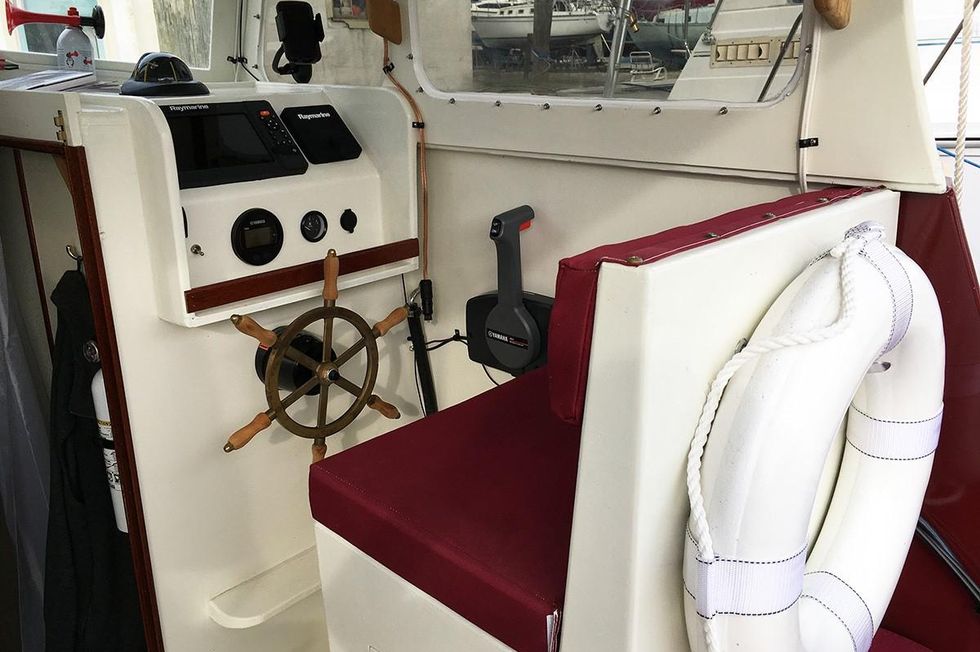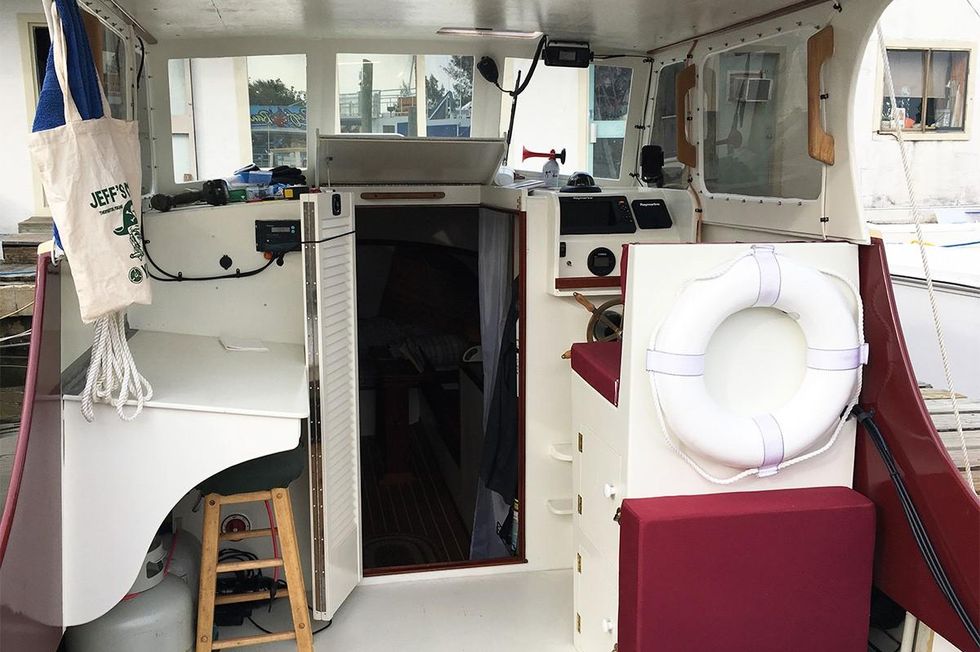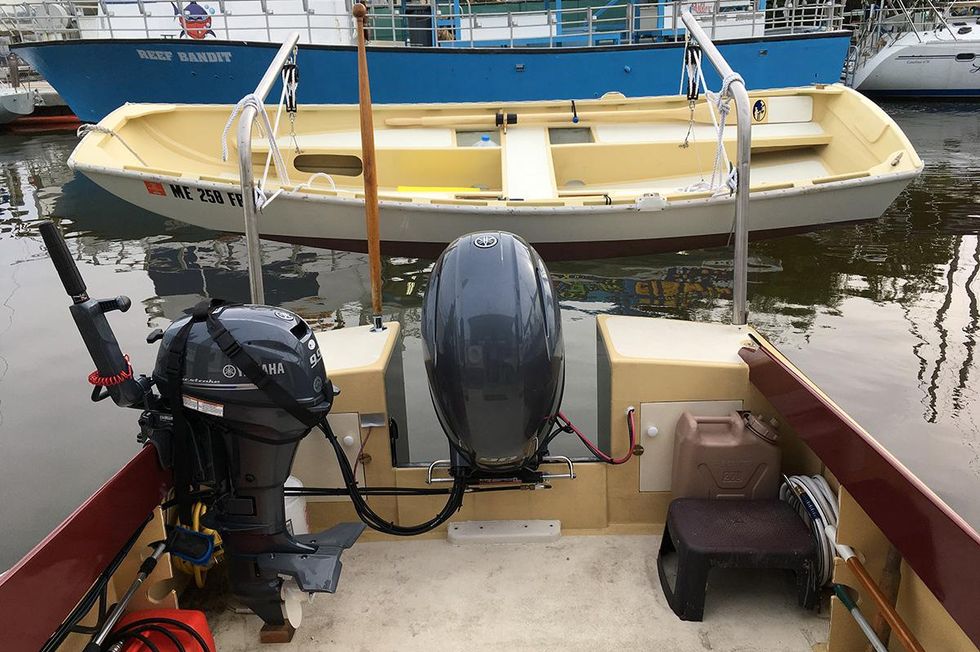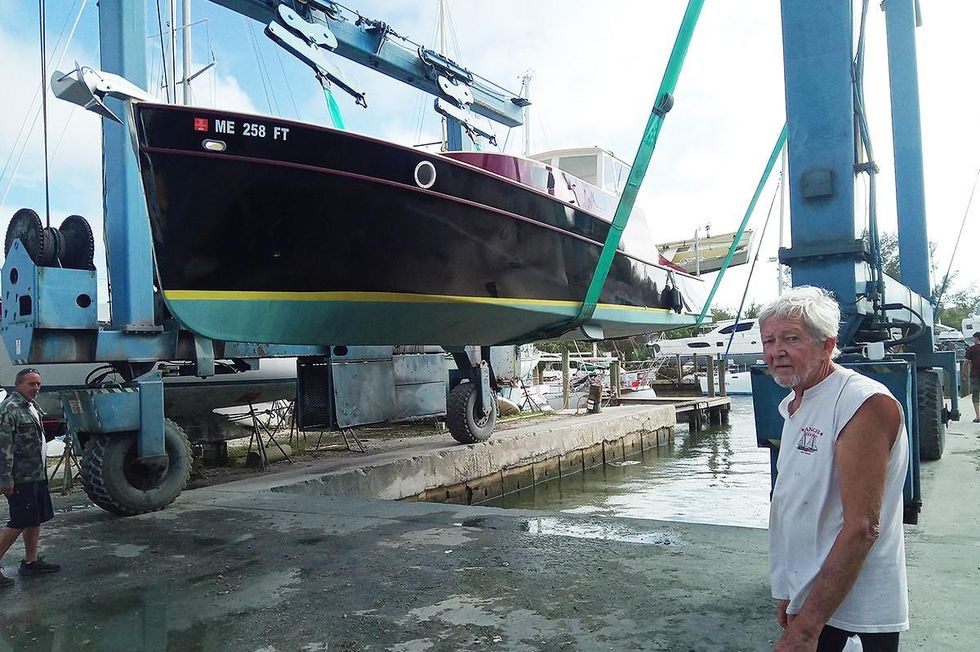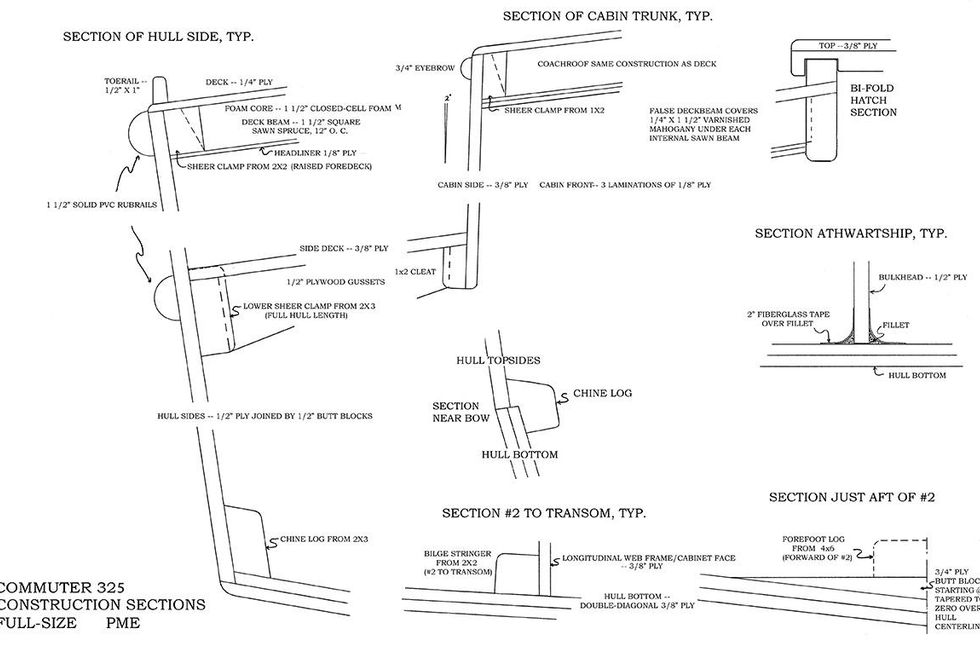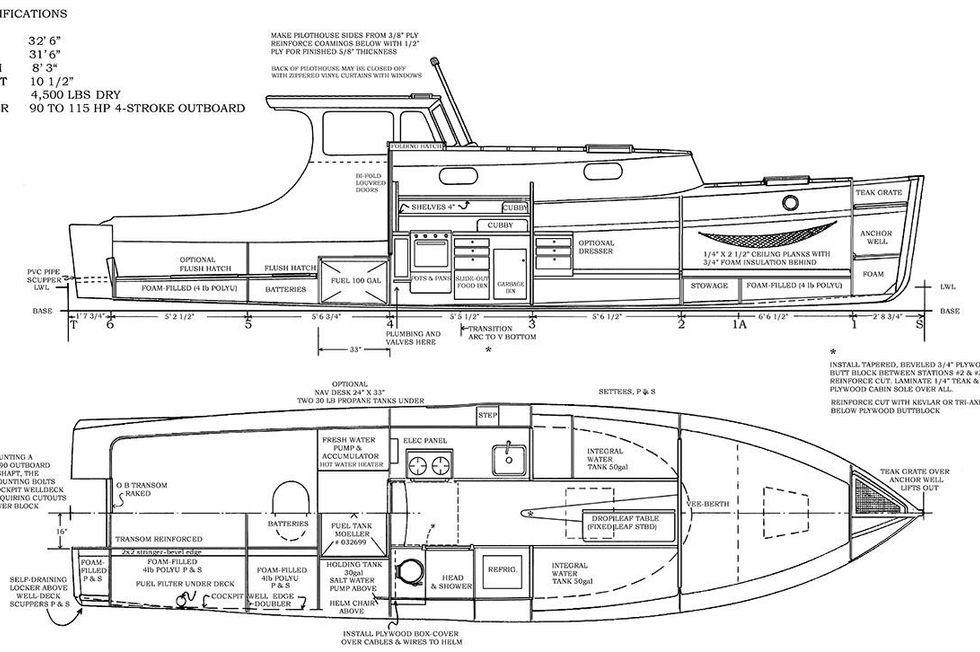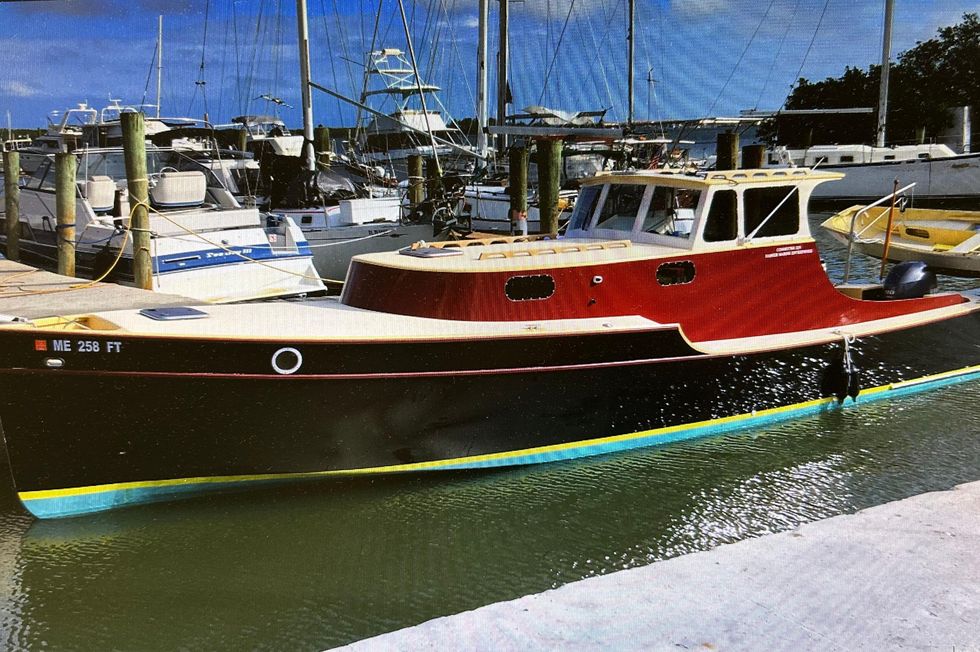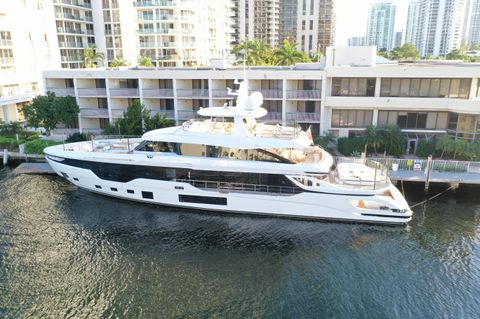2023 Custom Commuter 325
Yacht price :
Overview
Panther is purpose designed as a shallow draft cruiser to be easily managed by a single individual, couple, or small family in search of cruising adventures and day excursions in waters not readily available to most cruising boats of her size.
To this point, Panther under the command of her owner / designer / builder has circumnavigated South Florida via the Florida Keys, Everglades, Lake Okeechobee and ICW. Under the same single-handed command, Panther has cruised the entire US East Coast from Florida to Maine by way of offshore passages and transit of the Intracoastal Waterway.
During the above mentioned expeditions Panther was frequently in off-shore unprotected waters run in 2- to 3-foot seas and 5- to 15-knot winds where she performed beautifully and when conditions became less advantageous Panther's extreme shoal draft capabilities and low bridge clearance height (9') allowed her to be run uninterrupted at speed in protected (sometimes shoal) waters where most cruising power boats would fear to tread. Not everybody has time for long distance cruising and if for Panther's next owners time aboard is limited she is sold with a rugged double-axle (Five Star) trailer that allows her to cruise at 60 knots along the highway and scoot down little used back roads to be launched wherever her owners decide to explore be it deep water, shoals and banks, salt water or fresh.
Offered at a very reasonable price, Panther is seriously for sale. Call us to arrange a viewing and see Panther for yourself.
MCA Yachts Adv Co-Brokerage 8 is pleased to assist you in the purchase of this vessel. This boat is centrally listed by Sunshine Cruising Yachts.
(9140432)Specifications
Basic Information
- Manufacturer:
- Custom
- Model:
- Commuter 325
- Year:
- 2023
- Category:
- Power
- Condition:
- New
- Location:
- Fort Pierce, FL, US
- Available for sale in U.S. waters:
- Yes
- Vessel Name:
- Panther
- Boat Type:
- Downeast
- Hull Material:
- Composite
- Hull Type:
- Hull Color:
- HIN:
- Designer:
- Reuel Parker
- Flag of Registry:
Dimensions & Weight
- Length:
- 32 ft - 9.75 meter
- LOA:
- 32 ft 6 in - 9.91 meter
- Beam:
- 8 ft 3 in - 2.51 meter
- Draft - max:
- 0 ft 11 in - 0.28 meter
- Bridge Clearance:
- -
- Dry Weight:
- -
Engine
- Make:
- Yamaha
- Model:
- 4 Stroke 90 HP
- Engine(s):
- 1
- Hours:
- 300
- Cruise Speed:
- 16 MPH
- Range:
- -
- Joystick Control:
- No
- Engine Type:
- Outboard
- Drive Type:
- Fuel Type:
- Gas/Petrol
- Horsepower:
- 90 (Individual), 90 (combined)
- Max Speed:
- -
Tank Capacities
- Fuel Tank:
- 100 gallons - 1 tank(s)
- Fresh Water Tank:
- 100 gallons - 1 tank(s)
- Holding Tank:
- 25 gallons - 1 tank(s)
Accommodations
- Total Cabins:
- 1
- Total Berths:
- -
- Total Sleeps:
- -
- Total Heads:
- 1
- Captains Cabin:
- No
- Crew Cabins:
- -
- Crew Berths:
- -
- Crew Sleeps:
- -
- Crew Heads:
- -
Descriptions
Principle Dimensions and Information
Designer: Reuel Parker
Builder: Reuel Parker
Year Launched: 2023
LOA: 32', 6"
LWL: 31', 6"
Beam: 8', 3"
Draft: 10 ½"
Displacement: 5,000 lbs (half-load)
Propulsion: Yamaha outboard, 90 hp.
Engine Hours: 300 Hours
Cruising Speed: 14 Knots
Fuel Capacity: 100 Gallons
Freshwater Capacity: 100 Gallons
Blackwater Capacity: 25 Gallons
Hull and Deck Construction
Hull construction is Chilean Arauco ACX plywood, solid wood (Douglas fir) and epoxy with an exterior skin of Xynole fabric set in epoxy. Bow construction is heavy duty with solid wood apron, stem, and forefoot structure of Wolmanized 4x4 timber to withstand possible collisions with unseen submerged objects.
Hull, coach roof and pilot house top are foam-core for heat and sound insulation. There is hull insulation between topsides planking and ceiling planking.
Hull and Deck Construction (continued) There are twin bilge keels port and starboard for minimal turning radius and to resist side-drift at low-speed. Exterior surfaces are finished painted using Imron and Awlgrip paints
Exterior Color Scheme Topsides: Black Boot Stripe: Yellow Cabin sides and Cockpit Coamings: Red Mahogany Rub rails: Red Mahogany Deck, Cabin Top and Pilot House Top: Buff Pilot House Sides and Front: White Bottom: Green anti-fouling paint
Imron paint for all exterior finishes except for Awlgrip for the cabin sides. Interior paint is Sherwin Williams Tile Clad II industrial epoxy in Hatteras white.
Deck Hardware and Features
- Two (2) Lewmar #30 deck hatches with screens in cabin top
- One (1) Lewmar #20 deck hatch in pilothouse top
- Two (2) round deadlights in topsides forward
- Four (4) oval deadlights in cabin sides
- Louvred bi-fold companionway door with lock.
- Bi-fold companionway hatch
- Well-deck forward with removable access to the forepeak locker.
- Two stainless steel (2) hawses (port and starboard). 6" Docking cleats
- Bow roller incorporated in the heavy-duty stainless-steel anchor bracket.
- The cockpit well-deck is self-draining through transom scuppers.
Interior Layout and Accommodations
Interior entered by way of companionway door from pilot house. Private head compartment to starboard with marine toilet and shower. Galley area to port with additional galley equipment to starboard forward of head area. Continuing forward is main saloon with settee seating port and starboard and fixed (port)/drop leaf (starboard) table. Starboard settee can be used as a single berthing space. Furthest forward is generous sleeping accommodations for two persons in Vee-berth configuration Artificial (electrical) lighting and ventilation provided by LED overhead dome and reading lights and fans There are night-vision red lights where needed (Galley, Nav Station, Pilothouse, Head). Natural light provided by hull ports forward (2), fixed ports in cabin sides (4) and opening hatches in foredeck and coach roof which also provide natural ventilation. The interior finished in the Herreshoff style of White bulkheads, cabin sides, overhead and joinery accented by varnished mahogany trim and drawer faces. Counter tops are Black Formica. Interior hull sides are sheathed in Cypress ceiling planking. Cabin soles are on Teak and Holly faced marine plywood. Mattresses and cushions are extra-firm P-60 Reliatex 4" foam covered with water-resistant synthetics.
Chart table in pilothouse with hinged cover and chart storage.
Galley Equipment
- Force 10 gimbaed 2-burner stove with oven and broiler (separate burners)
- Composite Galley sink basin with hot and cold pressure water
- Large, well-insulated, top-loading refrigerator / freezer with Isotherm 12-volt dc refrigeration system.
- Slide-out Pantry and six large drawers.
Propulsion and Fuel Systems
- Yamaha 4-Stroke, F90 hp outboard motor.
- Yamaha ignition system.
- Yamaha single lever transmission and throttle control
- Yamaha tachometer and engine status gauge
- Propeller: Aluminum 3-blade 14x12; three spares of different sizes.
- Twin transom-mounted electric trim tabs.
- 100 Gallon fuel capacity in grounded plastic tank under pilothouse
- . Spare / emergency 5-gallon gas can with vent and spout.
- Steering Systems 15", 6-Spoke cast bronze steering wheel with teak spoke handles. Baystar hydraulic steering.
- Raymarine hydraulic Autopilot.
Electrical Systems 1
- 2-Volt DC ship's system and 115-Volt AC Shore power.
- Four deep-cycle batteries.
- Primary battery selector switch.
- 12-Volt DC circuit panel for control of all ship's DC systems.
- 12-VDC outlets (3).
- Shore Power Inlet & 50' 30-amp cable, plus adapters.
- 2 KW pure-sine-wave inverter hard-wired to 120VAC outlets (3) and hot water heater. Converter/battery charger hard-wired.
- Two (2) 100-watt Renogy solar panels on pilot house top. Solar-Panel Controller.
- All ship's electrical needs (12-volt DC and 115-volt AC) supplied by two flexible 100-watt Renogy solar panels permanently mounted on the pilothouse hardtop, with a 30-amp controller.
Plumbing and Sanitation Systems
- 100 Gallon freshwater capacity. Hot and cold pressure water. Black composite galley sink basin.
- Private head / shower compartment.
- SeaLand Traveler MSD (toilet) plumbed for discharge directly to 25-gallon holding tank.
- Holding tank can be discharged into the sea where legal via a Whale Gusher handpump or shore-side pump-out facility.
- The shower pan is voided by a Whale foot-pump.
- 5 Gallon hot water heater powered by the 2-KW Inverter.
Electronics and Navigational Equipment
- Plastimo Olympic 115 helm compass.
- Raymarine chart plotter with Navionics USA, Canadian and Bahamas charts.
- Raymarine autopilot.
- Icom IC-M330 VHF radio
- GPS and emergency transmitter.
- I-phone docking station at helm.
- Raymarine depth sounder.
- 27" Flat-screen movie center with DVD/Blue-ray player.
- Canvas Optional zippered curtains for aft end of pilot house (pending).
- Four-bow cockpit Bimini.
- Ground Tackle Systems 25 lb Lewmar plow.
- 20 lb Danforth.
- 15 lb Grapple.
- Rode One: 70 LF 1/4" chain and 100-feet 1/2" 3-strand Nylon.
- Rode Two: 30 LF 1/4" chain and 50-feet 1/2" 3-strand Nylon.
- Spare Line: assorted sizes and lengths including floating tow line.
- Safety Equipment Running lights are LED-type. Removable anchor light. One (1) Type IV PFD / life ring.
- Two (2) Type II PFD's / life jackets).
- Flare kit.
- First-aid kit
- Fire extinguisher
Additional Equipment
- Manuals and documentation for all appliances, machinery, etc.
- Custom Five Star double-axle boat trailer with "Bearing Buddies".
- Tie-down trailer strap (heavy-duty) Pivoting Stern Davits for 8- to 10-foot tender, 400 lb. capacity.
- Windshield Wiper.
- Custom-made floating wood/SS boathook.
- Two large fenders.
- Two small fenders. Four 30-foot Dock lines.
- Two 30-lb Propane bottles. Tool and parts lockers under the helm station, with a slide-out tool-box locker.
- Twin lazarette lockers P & S for spare parts, oil, filters, etc.
- Stern bracket for auxiliary outboard power.
- A new Yamaha 9.9 4-stroke outboard is available separately for dinghy and auxiliar power.
- 3-gallon fuel tank and hose for auxiliary outboard available separately.
- 11-foot custom built garvey available separately as tender.
Designer's Notes
PARKER MARINE ENTERPRISES
DESIGN COMMENTARY--COMMUTER 24, 27, 32, 36, 40 and 44
(New Designs--Commuter 24, 42, 43 and 325 Trailerable)
By Reuel B. Parker
A number of years ago, a local Key West developer came to us with a request for a very shallow draft powerboat design. This gentleman had built the original Phil Bolger Tennessee power sharpie many years ago. He sold the boat (she was still in Key West) shortly after completing her, and for years dreamt about building a larger power sharpie.
Working from ideas and sketches, I drew a preliminary concept boat. We modified that until we arrived at the drawings for Magic--the original Commuter 36. We wanted the character and appearance of the American 1930's commuter yachts, with the shoal draft of the sharpie, and a curved superstructure almost along art-deco lines. The cabin would require six feet headroom, and there would be berths for four, plus a galley and head. The cockpit would be huge, with a PT boat style helm station, and a large awning for shelter from the tropical sun. The boat would be outboard-powered, for simplicity, easy maintenance, and especially so the boat could be poled across the Florida flats in less than a foot of water. Hence this design may be the largest "flats" boat ever conceived. It is a pity that my client doesn't care about bone fishing! What he does care about is gunk-holing in very shallow water, bird-watching, exploring the wildlife of Florida Bay and the Everglades, and running up rivers and mangrove creeks. And anchoring behind keys and exploring beaches that no other boat of this size and type could even dream about approaching--and staying there for days at a time.
After the design evolved to where we all wanted it, he told us to build the boat. Construction was very simple, light, strong, and fast--and inexpensive. The hull is planked with sheets of ½" plywood--two layers on the bottom laid at opposite diagonals, and one layer for the topsides, butted with butt blocks. The hull is built over ½" plywood bulkheads set up on a strongback. Sheer clamps, chine logs and bilge stringers are ripped from conventional 2x4 stock. The deck and coachroof are foam-core plywood--¼" over 1 ½" closed-cell polyurethane foam with 1/8" plywood headliners. Beams are sawn from 1 ½" spruce 2x12's and are spaced between the two-ply layers in the same layer as the foam. Fore-and-aft web frames are 3/8" plywood and extend from bulkhead #2 to the transom. All blind compartments are foam-filled, giving the boat enough positive floatation to make her unsinkable--the foam compartments also prevent vibration and noise from pounding. The boat has a huge 110g. fuel tank under the bridge deck, and two 30g. bladder-type water tanks under the settees. There is a large ice box, and a 30g. holding tank for the marine toilet. All exterior surfaces are covered with Xynole-polyester fabric saturated with epoxy. This composite is vastly superior to fiberglass as a covering system for cold-molded wood construction. Paint systems are linear-polyurethane outside and epoxy inside. We trimmed her out with varnished mahogany inside, and natural teak outside. Table, doors and drawers are varnished mahogany, except the entry door, which is teak. All hatches and portlights are opening. Gel-cell batteries are located aft of the fuel tank compartment under a water-tight hatch. Ceiling planking is varnished cypress; the cabin sole is teak and holly plywood. The entire project took eleven weeks. Materials costs in 1997, including engine, tankage and awning, were about $25,000--almost unbelievably inexpensive.
For power we settled on the Honda 90 four-stroke, which has since been replaced after years of good service. Steering is hydraulic, with a 24" stainless steel destroyer wheel. Single-lever control is Morse. The finished boat cruises at 19 miles per hour consuming slightly over 4 gallons per hour, and runs wide open at about 24 miles per hour. We feel strongly that 90 to 115hp is right for the hull; a larger engine would over-power her, and a smaller engine would provide inferior performance.
To sum things up, the Commuter 36 is a unique family cabin cruiser: easy and inexpensive to build, able to be used in extremely shallow water, economical and great fun to operate, and well-suited to several kinds of fishing. Because of her extreme shoal draft and light weight, she is not intended for
use in rough water, for long off-shore passages, or for being driven hard for extended periods in high chop. She is, however, safe and comfortable, and capable of crossing the Gulf Stream to the Bahamas in settled, predictable weather. And she has the fuel range to make such trips practical.
In early 2004 I designed a second hull for the C-36. Above the water and inside, the new hull is identical to the original. This modified hull draws four more inches, has deeper V sections in the bow, carries the V further aft, and can be configured for either twin outboards or an inboard. Propulsion for the latter may be gas or diesel, conventional screw, jet-drive or I/O. The stern is a little fuller to support the additional weight--the twin outboards would be transom-mounted (not inset as the original was). The second version will displace approximately 500lbs more than the original, and will have an additional 2" of headroom. While still not intended as an offshore cruiser, the new hull will be able to run a little faster in chop, will be able to run in larger seas, and will be able to venture further offshore for fishing or passage-making.
In early 2006 I finally found the time to design two more Commuters--a 27'er and a 44'er. Clients had been asking for years for both a larger and smaller version of the venerable 36. The 27 has a relatively beamier hull, and still has an interior that will please a family with two small children, including a full galley, head and shower. The 44 has a raised central pilothouse and an aft cabin which provides total privacy for two couples. She is a large version of the 2nd generation 36' hull, in the true commuter style. Long and lean, she will punch into moderate sea and chop, with lighter weight, higher strength, lower maintenance and lower fuel consumption than her predecessors. This is an ideal coastal cruiser and island hopper, and can be outfitted for the cold in down-east Maine, or the heat of a Bahamian summer. For conventional power I have recommended two of the new Yanmar 4JH3-DTE turbo diesels. These engines produce 86 continuous horsepower. A second option is the new-generation diesel-electric hybrids manufactured by Solomon Technologies and Fischer-Panda. Using high-voltage DC permanent-magnet motors, a single gen-set can be used to power single or twin electric motors much more efficiently than using conventional diesel power. With glass-mat batteries, solar panels and wind generators, a Commuter 44 could cruise in total silence for hours at a time. A third option is to use controlled-pitch propellers (such as those manufactured by Hundestadt), allowing optimum fuel-consumption for any given sea conditions and speed, including running on one diesel.
Now there is a new Commuter 32 with the same basic visual appeal of the original 36, with a similar interior arrangement utilizing the 2nd generation hull shape with proportionately greater beam. And a Commuter 40 with a Maxi-trailerable beam of 10' with the same interior layout as the 44, using a single turbo Yanmar instead of twins. In 2020 I designed a 42-foot version, with a revised interior, and a round-bilge option for extreme efficiency (non-planing hullform).
In summer of 2017, I designed a Commuter 24--a little beamier and heavier, proportionately, with deep Vee bow sections and transom-mounted 50 to 75 hp 4-stroke outboard. Smaller twins may also be used (25 to 35 hp). This smallest Commuter will be light, fast, highly maneuverable, easily trailered, and perfect for fishing and weekend or longer cruises.
After the original C 36 was destroyed in a hurricane, I designed a new Commuter 43 for Erik DeBoer in Key West. The prototype was built by my friends Hylan & Brown, in my home town of Brooklin, Maine. This is a very sophisticated version, capable of long distance cruising. She is powered by twin 200 HP outboards, and has built in swim platforms.
In 2021 I designed a Commuter 325, a slightly larger version of the 32'er, with optional pilothouse and modified hullform. I built the prototype for myself, and intend to live aboard and cruise from Canada to the Bahamas. She is powered by a Yamaha F90 outboard.
Disclaimer
The Company offers the details of this vessel in good faith but cannot guarantee or warrant the accuracy of this information nor warrant the condition of the vessel. A buyer should instruct his agents, or his surveyors, to investigate such details as the buyer desires validated. This vessel is offered subject to prior sale, price change, or withdrawal without notice.




